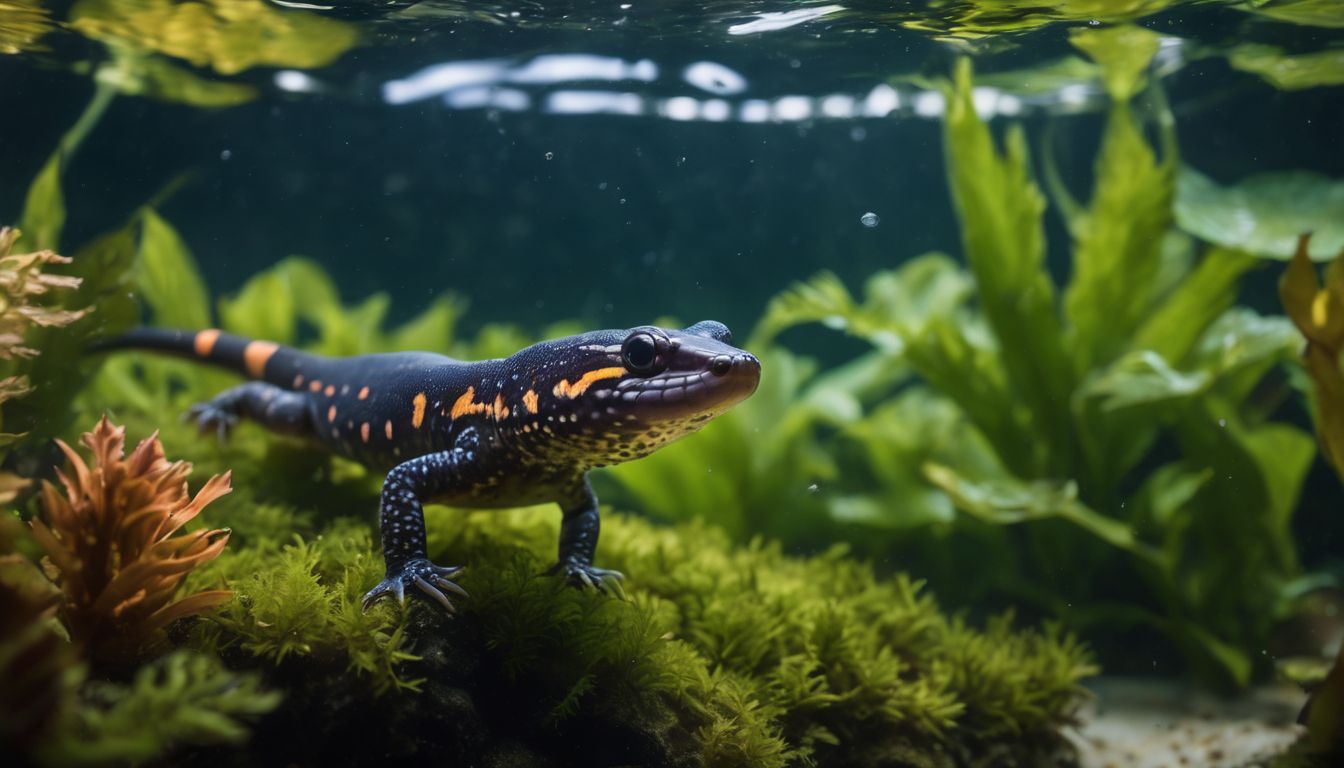Salamanders are fascinating creatures that can be found both ashore and underwater. Some species are able to survive in both environments, thanks to their unique breathing abilities, but can salamanders breathe underwater?
In this blog post, you will learn about different types of salamander-breathing organs and the duration they can stay underwater without drowning. Additionally, we’ll discuss why their respiratory system is so important to them— especially for aquatic salamanders who rely heavily on water sources for survival.
So let’s dive deep into discovering the amazing underwater breathing capacity of salamanders!
Key Takeaways
- Salamanders possess an impressive respiratory system that allows them to breathe in both air and water, thanks to their gills, lungs or specialized skin membranes.
- Particularly aquatic salamanders retain their gills for life which enables them to stay submerged underwater without drowning for indefinite periods of time.
- The duration of how long a salamander can remain underwater ultimately depends on the age, species and environment it is living in.
- Having access to air from both above and below the surface as well as being sensitive enough able detect changes in their environment make salamanders unique yet adaptable creatures that are integral to maintaining clean water sources with enough dissolved oxygen molecules necessary for other species’ survival too.
Different Breathing Abilities of Salamanders
Salamanders possess different abilities to breathe underwater, with larvae being able to absorb oxygen directly through their skin, terrestrial salamanders developing special organs and adult salamanders sometimes having external gills.
Salamander larvae can breathe underwater
Salamander larvae possess external, feathery gills that are responsible for enabling them to breathe underwater. When their mouths take in water, the forehead and lower gills act as a filter.
This allows only oxygen-rich water to pass through into the pharynx of the salamander while pushing out larger particles such as dirt away from it. The oxygen-rich part then passes through its gills which contain internal capillaries where blood cells absorb oxygen.
Consequently, this gas exchange also releases carbon dioxide back out into the environment; allowing salamanders to stay submerged underwater for an extended period of time by continuing this process until they reach adulthood and metamorphose into land-dwelling creatures with lungs instead of gill cavities.
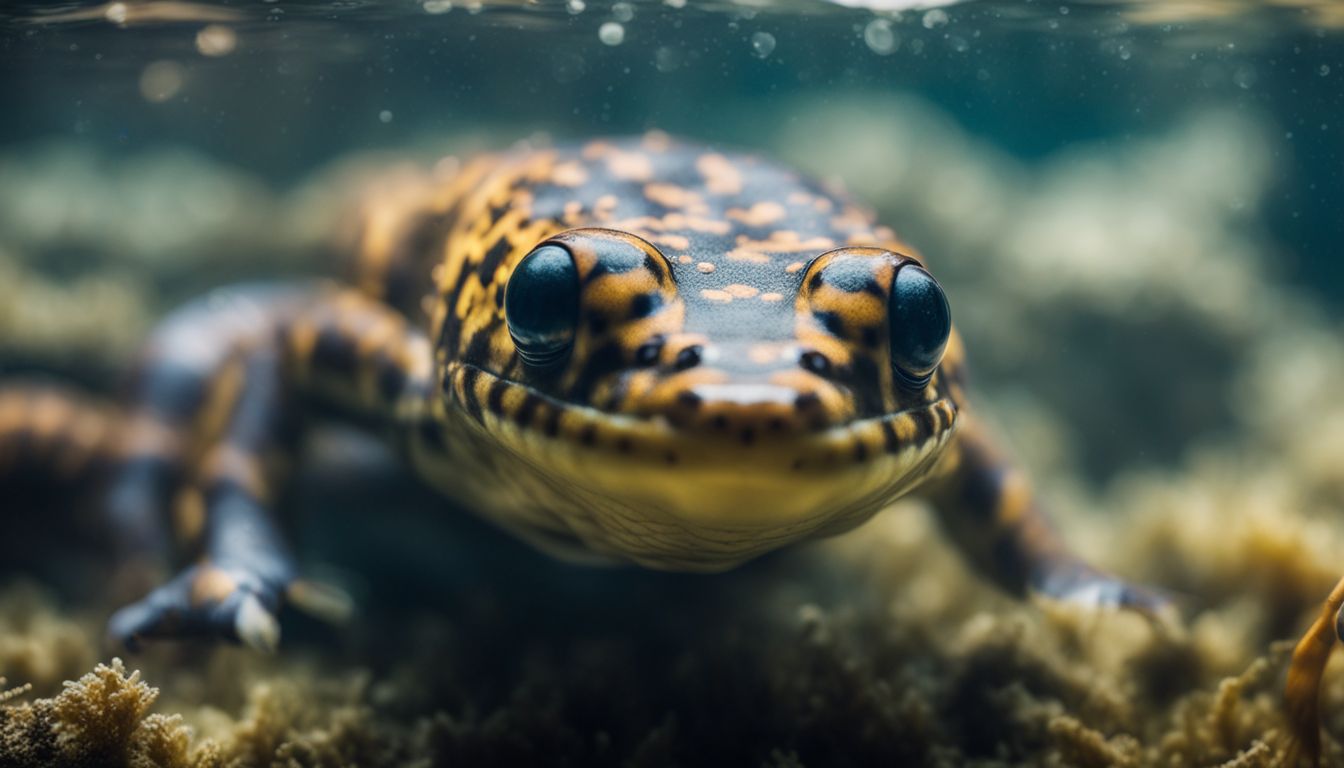
Terrestrial salamanders can sometimes breathe underwater which is primarily due to their respiratory system and gill structures. Salamanders possess specialized organs, namely their skin and mouth membranes, that allow them to absorb oxygen from the surrounding environment even when underwater.
These gills are essential for terrestrial salamanders as they provide them with a steady supply of oxygen while submerged in water. Furthermore, this adaptable breathing ability allows salamanders to survive in both land and water environments.
The ability of some salamanders such as Plethodon cinereus also known as “red back” salamander species to breathe underwater is still the subject of scientific research and amazing discovery today.
Adult salamanders may also have gills
in addition to lungs and skin for breathing. Gills are a type of respiratory system organs found in aquatic life forms, as opposed to lungs which serve the same purpose on land animals.
Adult axolotls or salamanders completely retain their gill structures but also have functional lungs, while some other species have only the gills or just partially evolved ones. Salamanders breathe through their gills when water passes over them rather than having direct contact with oxygen-rich air like humans do through our noses and mouths.
Moreover, a combination of both gills and lungs or even just using their skin can be used for respiration in some cases depending on the salamander’s environmental conditions such as the presence of water and the availability of oxygen from the atmosphere.
Duration of Underwater Breathing
How long salamanders can stay underwater can depend on the age, species and environment they live in.
How long can salamanders stay underwater?
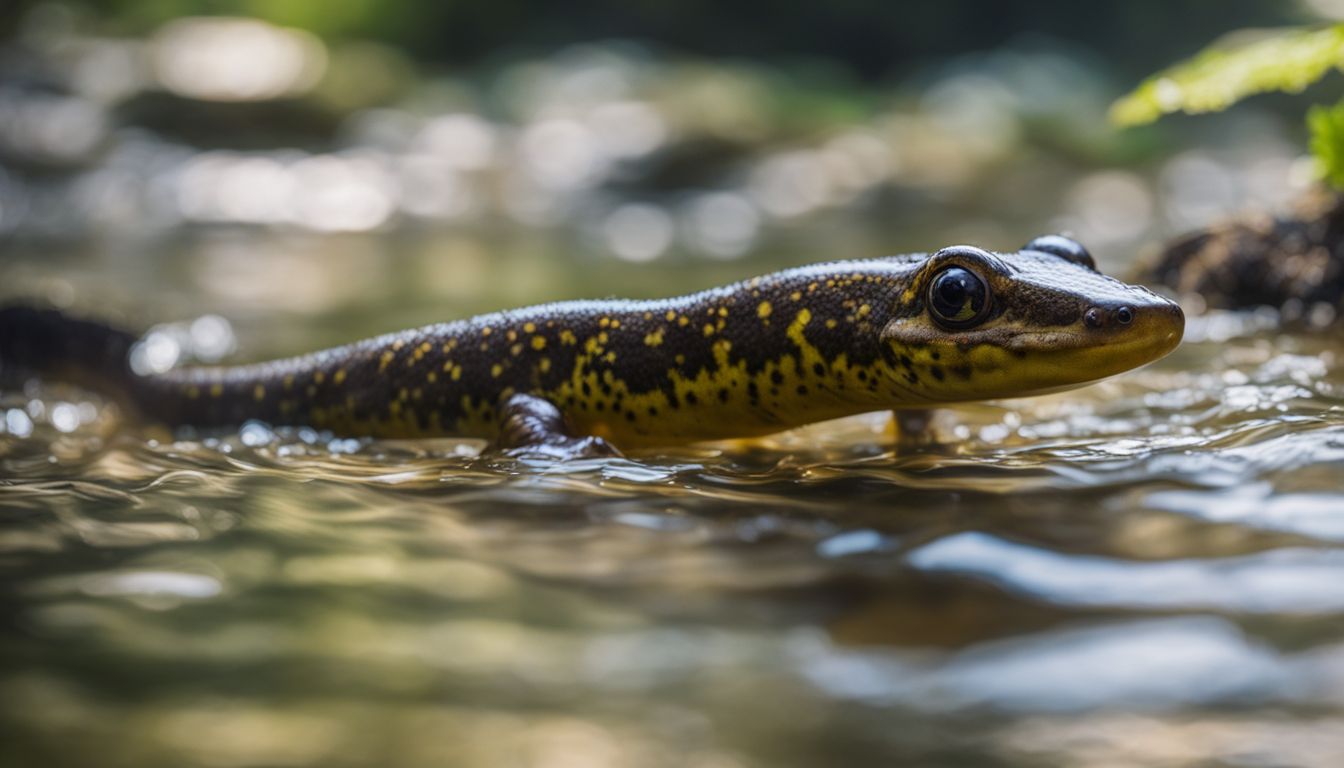
Salamanders can stay underwater for extended periods of time due to their unique respiratory adaptations. Salamander larvae, like sirens and mudpuppies, can remain underwater indefinitely since they have both gills and skin that allow them to absorb oxygen directly from the surrounding water.
Adult salamanders lose their gills as they mature, but they are able to survive in water with an adaptation called cutaneous respiration – some species use organs known as pseudo-gills which help increase tissue surface area so the salamander can respire through its skin more effectively.
Terrestrial salamanders occasionally enter aquatic environments and may be able to breathe underwater for short periods of time by absorbing oxygen through their skin and throat openings from the surrounding water.
Can salamanders drown?
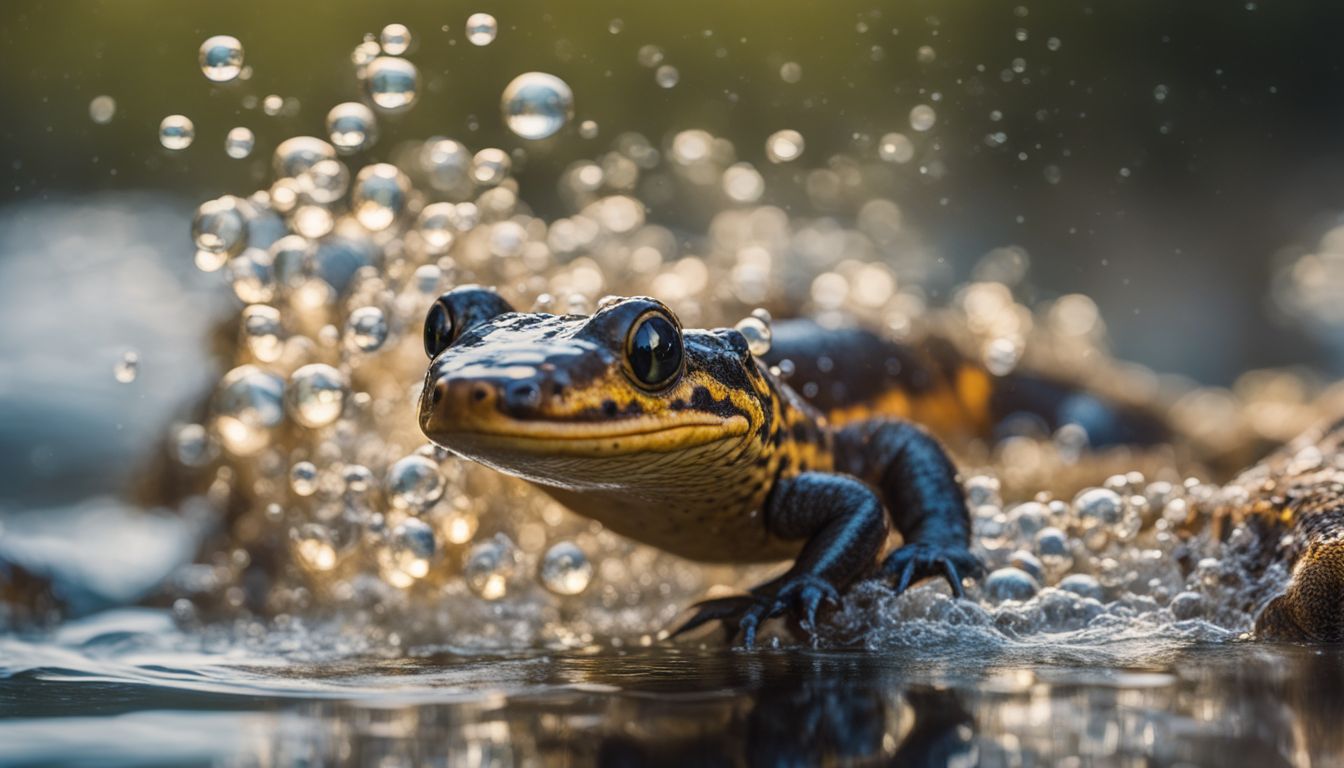
The answer to this question is yes, salamanders can drown if they stay underwater for too long. Because of their anatomical modifications, salamanders are able to breathe through both their gills and skin.
This allows them to remain submerged in water longer than other animals that have only the capacity to breathe through their lungs. However, since they don’t possess a strong air-breathing capability compared to terrestrial amphibians like frogs and newts; staying underwater for extended periods of time without access to oxygen depletes the oxygen levels in their bodies leading them towards drowning.
Notably, some species of adult aquatic salamanders do have gills allowing them a greater capacity for diving – which may even allow these species an ability akin to true breath hold diving meaning that such species can stay under the surface indefinitely while not being at risk of drowning as long as there is enough dissolved oxygen available in the water.
Significance of Salamanders’ Respiratory System

The specialized respiratory system of salamanders enables them to take advantage of living and foraging both on land and underwater.
The advantage of salamanders’ respiratory system

Salamanders possess a highly specialized and adaptive respiratory system that is adapted to survive both in water and on land. The distinct interior of their bodies allows them to extract oxygen from the air through their lungs, as well as through their skin if they are submerged in water.
In order for this unique feature to work efficiently, salamanders often have heavily supplied glands beneath their thin, permeable skin which allow oxygen molecules into their bloodstreams.
They also possess auditory capacity with lungs instead of an eardrum like other vertebrates – demonstrating the importance of having such an advanced respiratory system. This adaptability clearly gives salamanders a major advantage when it comes to surviving across different environments with varying levels of exposure to oxygen-rich air or water sources.
How salamanders survive in land and water
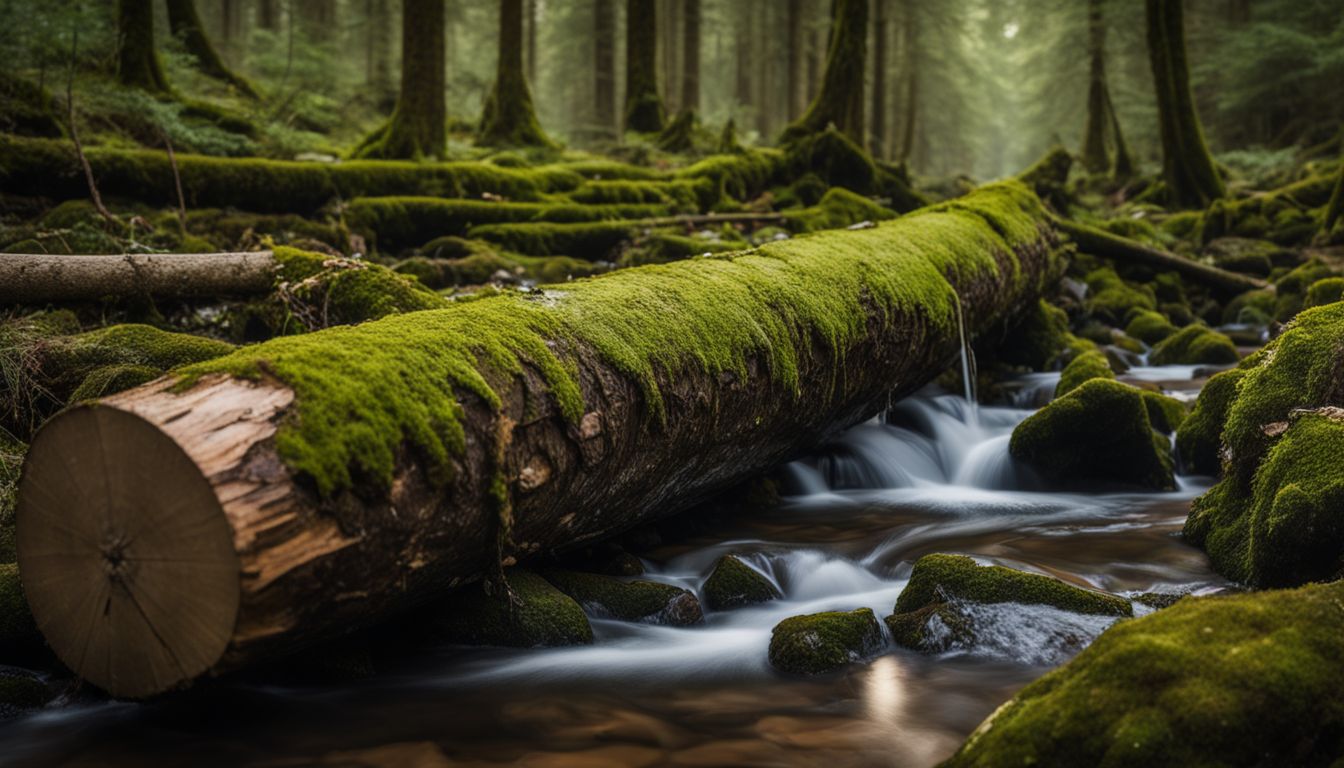
Salamander species have adapted unique respiratory systems that allow them to survive both on land and in water. These amphibians can extract oxygen from the surrounding environment by taking breaths through their gills, lungs or their skin.
Some salamanders, like arboreal salamanders and California slender salamanders, don’t even possess a pair of lungs as adults and rely completely on other means for respiration such as cloacal breathing or cutaneous respiration – drawing air directly into the soft parts of the body including organs like intestines, stomachs and bladders without using any external organs.
The skin is also an effective medium of taking in oxygen for some species since it is covered with mucous membranes which facilitates absorption. So they use this adaptation to breathe underwater even if it’s only for short durations until they need an atmospheric exchange again with intermittent (short) periods spent submerged beneath the surface.
Importance of a water source for salamanders

A water source is essential to the survival of salamanders. Their respiratory needs are heavily dependent on the quality and quantity of the accessible aquatic environment, especially for their larval stage.
Poorly oxygenated or polluted waters can cause a major decline in salamander population size due to an increased mortality rate, as well as damage done to their habitats and food sources.
The Barton Springs Salamander is an example of one particular species that relies solely on its skin for respiration – it lacks lungs completely so the presence of oxygen-rich freshwater is critical for its life cycle.
Conclusion
Salamanders are unique amphibians that have a variety of adaptations allowing them to survive in either aquatic or terrestrial environments. They possess an impressive respiratory system, which enables them to breathe underwater and on land.
Salamander larvae can achieve this feat through their gills, while most adults rely on absorbing oxygen through their skin. Some salamanders, like the Japanese giant salamander and sirens, keep their gills for life which allows them to effectively stay submerged for extended periods of time without drowning.
This type of adaptation is especially integral to protecting these creatures from water-filled habitats that may be contaminated with pollutants that ultimately affect oxygen levels making it difficult for other species to survive there as well.
Overall, by having access to air both below and above the surface of the water as well as being sensitive enough able detect changes in air quality makes salamanders quite extraordinary indeed!
FAQs
Where can I find salamanders?
Salamanders are found on every continent except Antarctica and prefer environments with moist, acidic soil. They can also be found near bodies of water such as stream beds, wetlands, rivers, and lakes.
How do salamanders breathe underwater?
Salamanders have the unique ability to absorb oxygen through their skin while underwater by diffusing oxygen molecules from surrounding water into their body tissues.
What other abilities do salamanders have underwater?
Salamanders can also remain submerged for extended periods of time due to anaerobic metabolism that allows them to use up much less oxygen than terrestrial animals while at rest.

